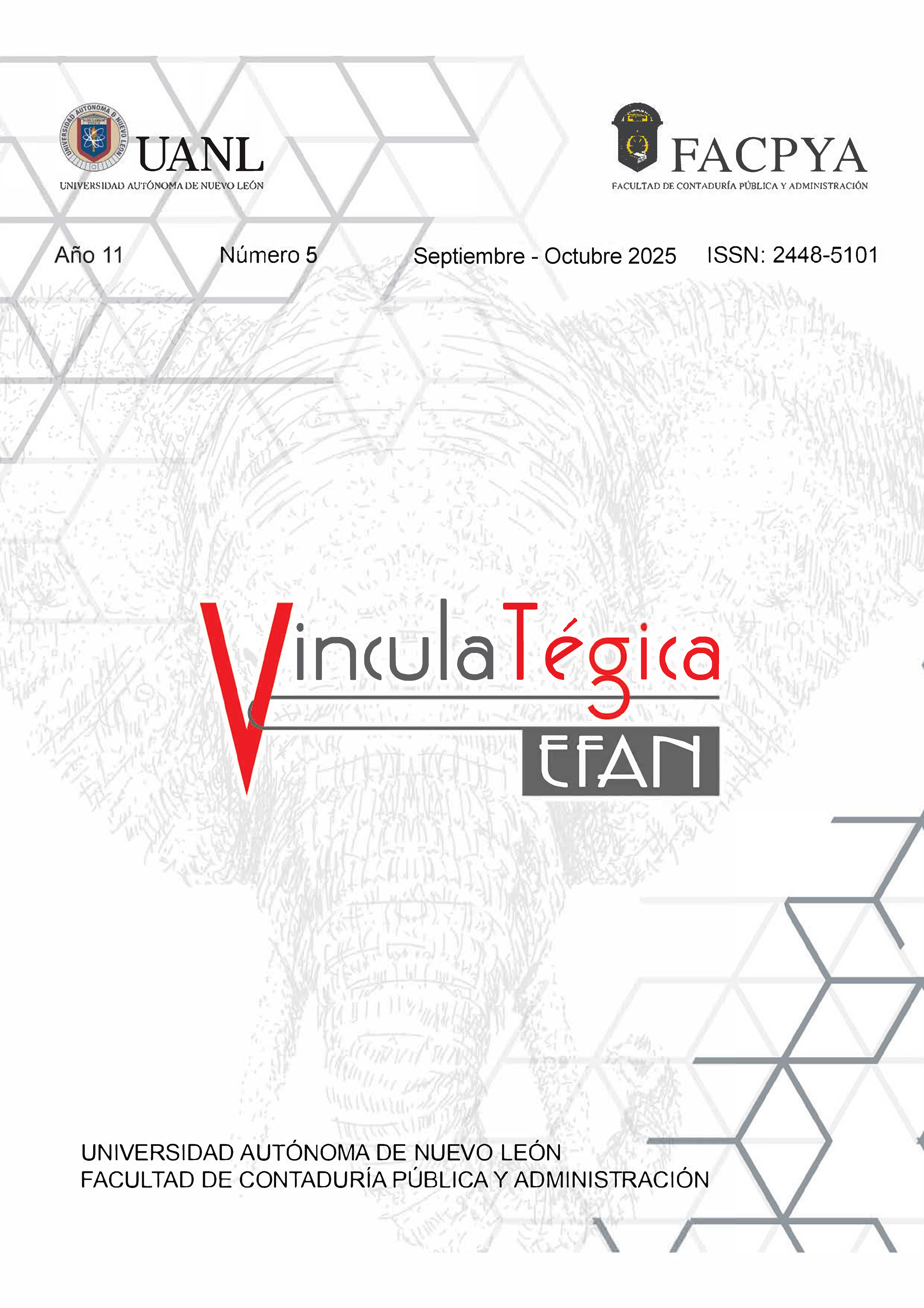Optimization of Home Delivery Logistics Time in Microenterprises Located in the Municipality of La Barca, Jalisco
DOI:
https://doi.org/10.29105/vtga11.5-1199Keywords:
Time Optimization, Logistics, Home Deliveries, MicroenterprisesAbstract
In the current context of accelerated e-commerce growth and the digitalization of services, home delivery logistics has taken on a fundamental role in the operations and competitiveness of smaller companies seeking to consolidate their position in highly dynamic markets. The objective is to demonstrate the importance of implementing efficient strategies to optimize home delivery logistics in microenterprises in La Barca, Jalisco. For this purpose, a mixed-method approach was used for data collection and analysis, with a longitudinal and cross-sectional design to monitor home delivery logistics and establish cause-and-effect relationships. The methods used were field-based, documentary and participatory, and deductive and analytical. The implementation of logistics improvements in the microenterprises studied represented a fundamental change in the way production, storage, distribution, and customer service were managed. The three key tools adopted: the Just-in-Time (JIT) model, the optimal routing model, and real-time inventory monitoring and management transformed not only the companies' operational efficiency but also their ability to compete more effectively in the market.
Downloads
References
Aguilar, S. (2005). Fórmula para el cálculo de la muestra en investigaciones de salud. Volumen 11, número 1 – 2. Revista Salud Tabasco. http://www.redalyc.org/pdf/487/487112006.pdf
Axsater, S. (2006). Control de Inventarios. Springer.
Banco Mundial. (2019). Informe sobre el desarrollo mundial 2019: La naturaleza del trabajo. Washington, DC: Banco Mundial.
Beamon, B. M. (1999). Medición del rendimiento de la cadena de suministro. Revista Internacional de Gestión de Operaciones y Producción, 19(3), 275-292.
CEPAL. (2021). Financiamiento para el desarrollo sostenible en América Latina y el Caribe. Santiago, Chile: Comisión Económica para América Latina y el Caribe.
Chopra, S., & Meindl, P. (2016). Gestión de la cadena de suministro: Estrategia, planificación y operación. Pearson Educación.
Daganzo, C. F. (2005). Análisis de Sistemas Logísticos. Springer.
Davenport, T. H. (2013). Innovación de Procesos: Reingeniería del Trabajo a través de la Tecnología de la Información. Harvard Business Review Press.
DENUE. (2022) Directorio Estadístico Nacional de Unidades Económicas. http://www.inegi.org.mx/mapa/denue/default.aspx
Frazelle, E. H. (2002). Almacenamiento y manipulación de materiales de clase mundial. McGraw-Hill.
González, M., López, R., & Martínez, A. (2018). Logística y transporte en microempresas rurales. Revista de Economía y Empresa, 12(1), 45-62.
Heskett, J. L. (1994). Innovaciones en el Servicio: Cambiando las Reglas del Juego en el Sector de Servicios. Simon & Schuster.
Hugos, M. H. (2018). Fundamentos de la gestión de la cadena de suministro. Wiley.
Kahn, B. E., & Schwartz, A. (2005). Una Perspectiva Comportamental sobre la Satisfacción del Cliente. Revista de Investigación del Consumidor, 32(4), 487-493.
Levín, R. & Rubín D. (1996). Estadística para administradores. Prentice Hall: México.
Mangan, J., Lalwani, C., & Butcher, T. (2016). Logística global y gestión de la cadena de suministro. Wiley.
Martínez, R. (2022). Digitalización y logística en microempresas: Una necesidad imperiosa. Innovación Empresarial, 14(4), 30-50.
Meyer, D. (2020). Logística urbana: Desafíos y soluciones para microempresas. Revista Internacional de Logística, 18(2), 67-90.
Mentzer, J. T., Min, S., & Bobbitt, L. M. (2001). Hacia una teoría unificada de la logística. Revista de Logística Empresarial, 22(2), 1-25.
Oleas, C. X., Mazón, G. J., & Zárate, E. D. (2020). Optimización del proceso logístico en el transporte y las operaciones de exportación mediante fórmulas matemáticas en los KPI´s. Revista Científica Dominio de las Ciencias, 6(3), 756-773 https://dominiodelasciencias.com/ojs/index.php/es/article/view/1314
Organización Internacional del Trabajo. (2020). Microempresas y empleo: un análisis de la situación laboral en el mundo. Ginebra: OIT.
Rao, S. S., & Goldsby, T. J. (2009). Gestión de la cadena de suministro: La importancia de la capacitación y educación. Revista Internacional de Gestión Logística, 20(1), 6578.
Rodríguez, T. (2023). Colaboración entre microempresas: Un camino hacia la eficiencia logística. Emprendimiento y Colaboración, 7(1), 22-36.
Rushton, A., Croucher, P., & Baker, P. (2014). Logística y gestión de la cadena de suministro. Kogan Page.
Sarkis, J. (2017). Teoría de la gestión sostenible de la cadena de suministro. Revista de Gestión de la Cadena de Suministro, 53(4), 1-5.
Schiffman, L. G., & Kanuk, L. L. (2010). Comportamiento del consumidor (10.ª ed.). Pearson.
Wang, Y., Gunasekaran, A., & Ngai, E. W. T. (2016). Desarrollo sostenible en la logística y gestión de la cadena de suministro: Una revisión de la literatura. Revista Internacional de Economía de Producción, 205, 100-116.
Waters, D. (2019). Gestión de la cadena de suministro: Una introducción a la logística. Macmillan.
Womack, J. P., & Jones, D. T. (2003). Pensamiento Lean: Eliminar Desperdicios y Crear Riqueza en Su Corporación. Free Press.
Downloads
Published
How to Cite
Issue
Section
License
Copyright (c) 2025 Luz María Galán Briseño, Miguel Castro Sánchez, Miguel Angel Barajas López

This work is licensed under a Creative Commons Attribution 4.0 International License.
a). Authors keep copyright and give the journal the right of the first publication of the work under a Creative Commons attribution license. This license allows others to share the work as long as original authorship and initial publication in this journal is acknowledged.
b). Authors may make other independent and additional contractual agreements for the non-exclusive distribution of the version of the article published in this journal (e.g., include it in an institutional repository or publish it in a book) as long as they clearly indicate that the work was published for the first time in this journal.







